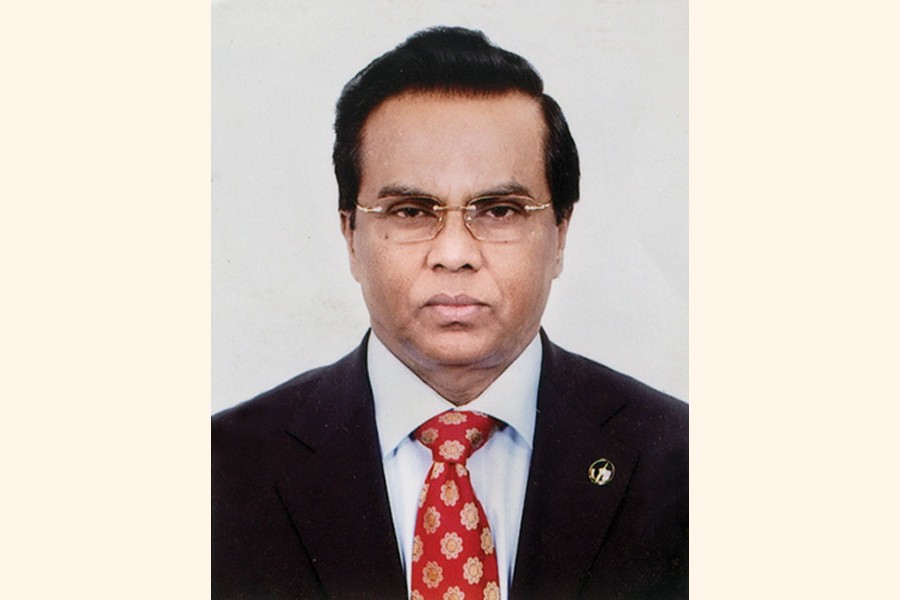Bangladesh needs to comprehensively revisit its current small and medium enterprise (SME) policies and strategies starting from definitions to funding arrangements and policy interventions to aid sustainable development of the highly-potential sector.
Eminent development economist and SME specialist Dr Momtaz Uddin Ahmed made the observation in an interview with The Financial Express (FE) recently.
Dr Ahmed, who was one of the pioneers in establishing the SME Foundation, also narrated the sector's current state, challenges and the ways to overcome them.
 He said the country' SME sector occupies a very important position in the national economy by accounting for 25-28 per cent of Gross Domestic Product (GDP), 70-80 per cent of the industrial employment and a significant portion of the total national exports. The sector's exact share in the exports is still unknown due to unavailability of official estimates.
He said the country' SME sector occupies a very important position in the national economy by accounting for 25-28 per cent of Gross Domestic Product (GDP), 70-80 per cent of the industrial employment and a significant portion of the total national exports. The sector's exact share in the exports is still unknown due to unavailability of official estimates.
He also noted that the sector had been enjoying a good annual growth rate of over 7.0 per cent in its contribution to manufacturing in the GDP over the last two decades.
Dr Ahmed, who had taught economics at Dhaka University for more than four decades since 1970, also observed that the lack or absence of a national database made pragmatic policy making and designing the necessary interventional measures rather difficult. He also opined that the definitions used by the policymakers in defining SMEs were not appropriate and thus causing multiple problems with accurately targeting the intended beneficiaries in the sector.
The government defines the SMEs using two quantitative indicators-the number of jobs in each enterprise and the volume of fixed assets (excluding land and buildings).
According to Dr Ahmed, the current SME definitions in Bangladesh are unnecessarily inflated, changed periodically (three times between 2005 and 2010 ) for no compelling reason. Further, there is also the lack of harmonisation of definitions used by different support agencies adversely affecting the desired targeting and sustainability of the promotional efforts.
This definition is rather causing multiple problems to the promising sector, he went on.
Dr Ahmed also mentioned that the central bank follows different definitions in providing refinancing services, but the agencies working in the field have other definitions.
"So, it's causing a serious problem with the SME development. We need a uniform definition that will ease policy interventions in a sustainable way," he added.
"Otherwise, the benefit package or business development services cannot reach the actual groups," he continued.
Besides the quantitative characteristics of enterprises, he suggested that the government follow qualitative characteristics like ownership, market segmentation and fields of business to categorise SMEs.
Terming access to formal finance a serious impediment to the development of the sector, Dr. Ahmed, a former member of the Planning Commission of the government, found the commercial banks rather allergic to financing SMEs as they think funding SMEs is a high-cost, high-risk and low-profit operation.
Factors like low profitability, insufficient collateral and the lack of audited accounts and such other information discourage the banks to fund SMEs.
"Bankers should change this conventional mindset and go for relationship banking to serve clients," he noted. "It becomes difficult for many SMEs to maintain audited accounts or appoint even a clerk."
Banks should consider whether the business is economically viable and then help the entrepreneurs maintain audited accounts, he insisted. To ensure access to formal financing, the SME specialist proposed a four-tier financial model now being followed in countries such as India, Malaysia, the Philippines and Thailand.
In the first tier, there should be a separate bank for SMEs. The second tier will have financial institutions like national development financial institutions (DFIs), specialised banks and venture capital firms. The third tier, according to Mr Ahmed, will have regional DFIs or regional banks.
In the fourth tier, microfinance institutions will cover unregistered enterprises and self-help groups who constitute the overwhelming majority of the sector.
Calling for a separate special economic zone (SEZ) for SMEs, Dr Ahmed said the country was developing 100 SEZs across the country. "But how many zones are for SMEs? Medium and large-scale enterprises will get various benefits from such clustres. What about the smaller ones?" he asked.
Giving examples of Japan and the United States, the economist said the concept of contract manufacturing helped develop SMEs in those countries.
"We need such models so large companies can manufacture final products by sourcing accessories or necessary equipment from small firms as Toyota and Boeing do."
"By doing so, we can properly develop potential sectors like plastic and light engineering," he added. Dr Ahmed laid emphasis on formulation of an SME act as was done by many other developing and developed countries to ensure legal protection of the sector. He also highlighted the need for a holistic policy on the sector so that an institutional body could monitor small firms running existential risk while competing with medium and large ones. The development economist said the country cannot attain sustainable development goals (SDGs) by 2030 without harmonious development of SMEs that can create jobs as they did in many countries.
"When an entrepreneur-based society starts growing up, nobody can stop it from being developed," said Dr Ahmed, also a key member of the board of directors of the SME Foundation.
Hailing the government's fiscal measures to keep a block allocation for development of SMEs in the budget, he said it shows the state's positive attitude to the sector.
Dr Ahmed called upon the media to cover the area properly and help create awareness about SMEs in the society as it can create jobs, contribute to poverty alleviation and reduce regional growth gaps.


